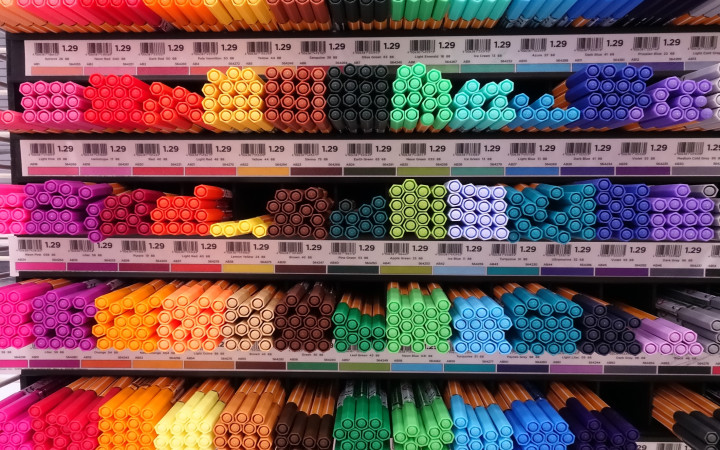Today’s Wonder of the Day was inspired by Juno. Juno Wonders, “What are markers made of?” Thanks for WONDERing with us, Juno!
Some of them are permanent. Others can be wiped or washed away. They come in every color—and sometimes every scent—imaginable. And some of them are even magic! That’s right, today’s Wonder of the Day is about one of the most popular art and office supplies around—the marker.
If you’re like many kids, you’ve probably been around your fair share of markers. You might have used them to write on a dry-erase board or color an art project. But have you ever stopped to WONDER where exactly markers came from?
Early markers were not easy to write with, which made them rather unpopular. Lee Newman patented the first marking pen in 1910, and Benjamin Paskach made the fountain paintbrush in 1926. A later form of the marking pen was created by Walter J. De Groft in 1944. None of these products took off commercially, but they did lay the foundation for today’s variety of markers.
When the Magic Marker hit the shelves in 1953, it changed everything. Invented by Sidney Rosenthal, this marker was made of a glass tube full of ink and a felt tip. What made it “magic”? That part of the marker’s name came from its ability to write on any surface.
Of course, today’s markers are a bit different from the first Magic Marker. You’re probably familiar with the outside of the marker--the plastic tube and cap you hold in your hands. But what goes into the marker to make it work?
Inside that plastic tube is an absorbent material. This holds the ink that gives each marker its color. The ink itself is made of a pigment or dye to give it a color, a resin to make it stick to a writing surface, and a solvent to make the ink move through the marker.
A plastic top seals one end of the marker off, and a felt tip makes it possible to write with the other end. Once a plastic cap that matches the ink covers the tip, the marker is ready for use.
Okay, so now we know how markers get their color. But what about those scented markers? How on Earth do they work? Scented markers are made the same way, with the addition of an ester. When added to ink, esters cause markers to have a scent like grape, blueberry, or apple.
What’s your favorite way to use markers? Do you draw pictures for your family members? Write letters to your friends? Leave notes on the whiteboard for your teacher? The next time you use a marker, think about what went into making it. You might start to appreciate this popular art supply in a whole new way!
Standards: NGSS.PS1.A, CCRA.R.4, CCRA.L.3, CCRA.L.6, CCRA.R.1, CCRA.R.2, CCRA.W.2, CCRA.W.4, CCRA.L.1, CCRA.L.2, CCRA.SL.1, CCRA.R.10, NCAS.VA-Cr1.2




